Affiliate disclosure: This post may contain affiliate links. Please see our Privacy Policy.
Humans require salt for survival, plain and simple. While it’s easy enough to extract salt from seawater, that’s only practical if you’re near the coast. Inland sources of salt were well known to our ancestors, but most of that knowledge is long gone.
Beyond natural deposits, it’s also possible to extract salt from plants. Some plants, especially salt-tolerant plants, can bioaccumulate salt in their tissues.
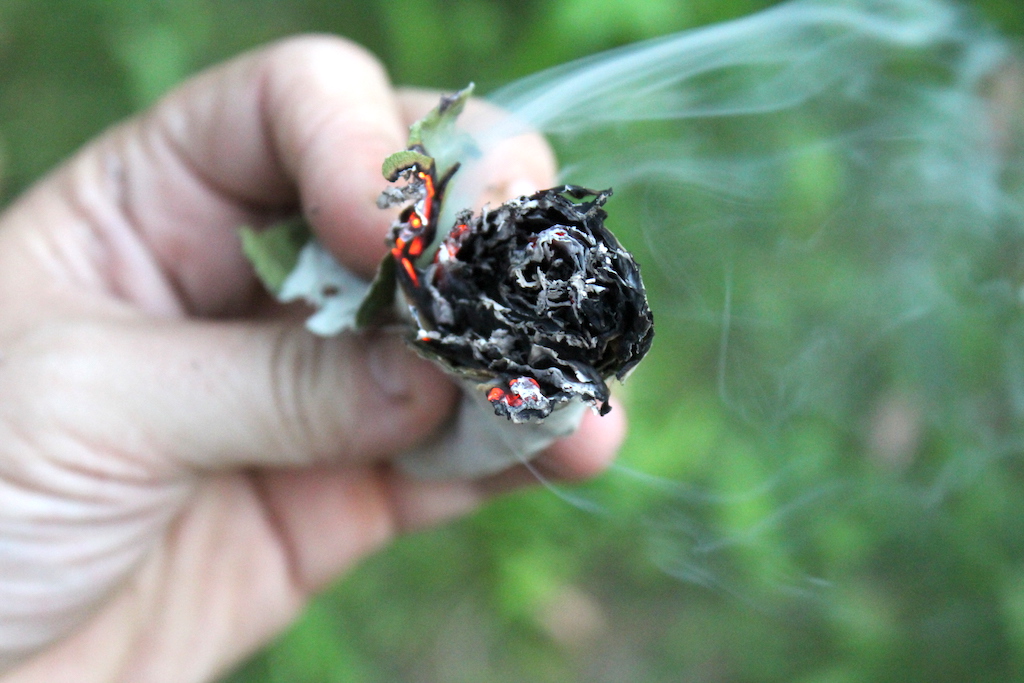
Table of Contents
Many years ago, I found a reference to coltsfoot salt in The Wild Food Trail Guide. “Coltsfoot leaves also provide a substitute for salt: roll the leaves into balls and dry them before the fire; when thoroughly dry, burn them. The resulting ash is very salty and can be used in the wilderness to season food.”
Then a while later, I came across a reference to coltsfoot salt in Foods of the Americas: Native Foods and Traditions, which was put out by the Smithsonian National Museum of the American Indian.
It says that “The ash produced by burning the dry leaves was used as a salt substitute by many indigenous people of North America. Dried coltsfoot leaves can be bought at health food stores. Simply burn them in a pan, allow the ashes to cool, and crumble for use.”
The book also notes that coltsfoot is found all across the US, and it was traditionally used to make coltsfoot tea (a cough remedy), and in more recent history, coltsfoot wine. It contains quite a few traditional recipes made with coltsfoot salt, including a recipe for traditional acorn bread made with acorn flour, which is salted with coltsfoot ash.
So how do you find and identify this plant-based salt substitute?
Making Coltsfoot Salt
Coltsfoot plants (Tussilago farfara) are about as common as dandelions, and chances are you pass one at some point on a daily basis, even in urban environments. They’re so common that once you know how to identify them, you’ll see them everywhere you go.
Coltsfoot especially loves poor, degraded and compacted soils along roadsides.
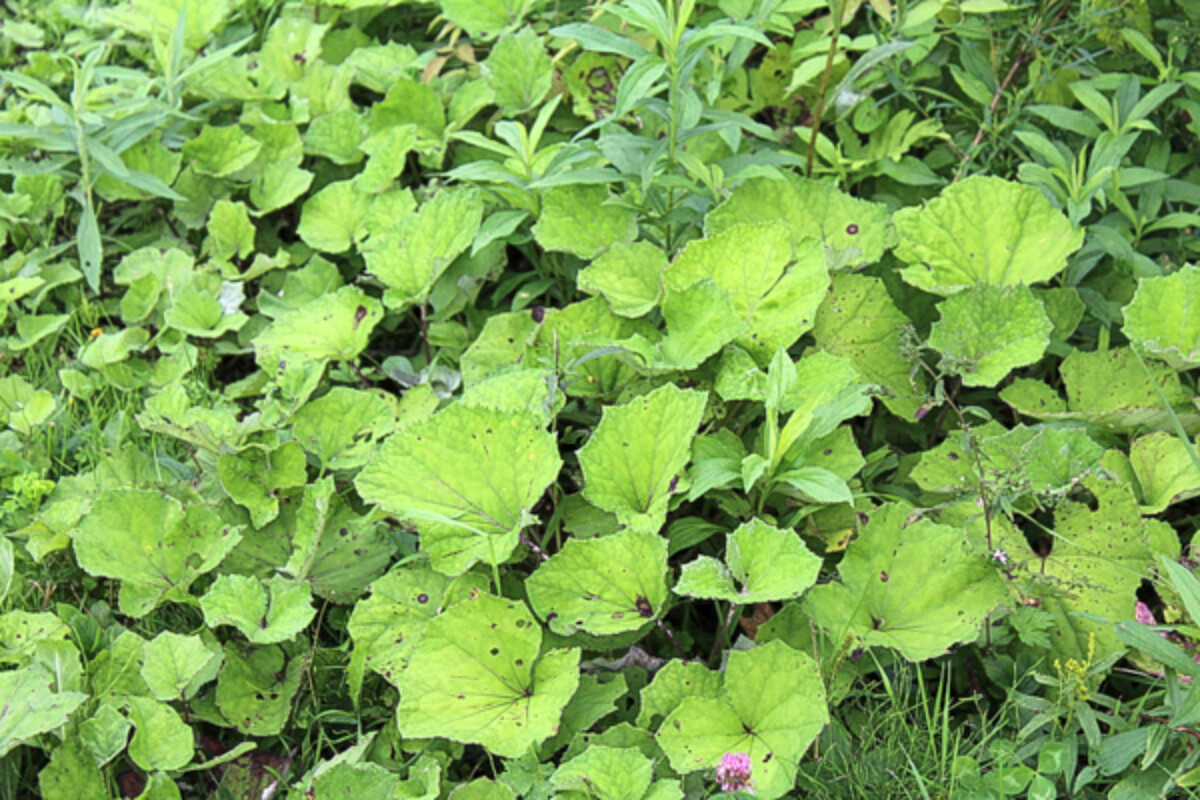
Every summer I plan on trying to extract salt from coltsfoot, but since it’s so common and has such a long season, I find myself putting it off. Every time I walk by that patch at the edge of the driveway I think, I’ll harvest some tomorrow. It’s nice to know that coltsfoot is around and available much of the year, even up here in our northern climate.
It took me about 3 seconds to harvest a large handful of leaves, plenty to get started making coltsfoot salt.

I laid the coltsfoot leaves out on my picnic table and left them to dry for about 12 hours in the sun. At that point, they were quite dry and ready for the first coltsfoot salt experiment.
Starting with bundles of 3 or 4 leaves, I rolled them into a tight cylinder of leaves. Some of the leaves cracked as I made the roll, but they held together well enough.

Since I was taking pictures, I called my husband out and handed him the roll. He looks at me and says, “So what’s the plan here, are you going to smoke that whole thing?”
That certainly wasn’t the plan, but coltsfoot was smoked traditionally by native peoples. Coltsfoot has a long history of use as a cure for respiratory issues, and it contains anti-inflammatory compounds that were delivered directly to the lung tissues through smoking.
I made a medicinal wine out of coltsfoot blossoms this past spring, hoping to preserve some of the coltsfoot cough medicine. Drying the leaves and smoking them would be quite a bit easier.
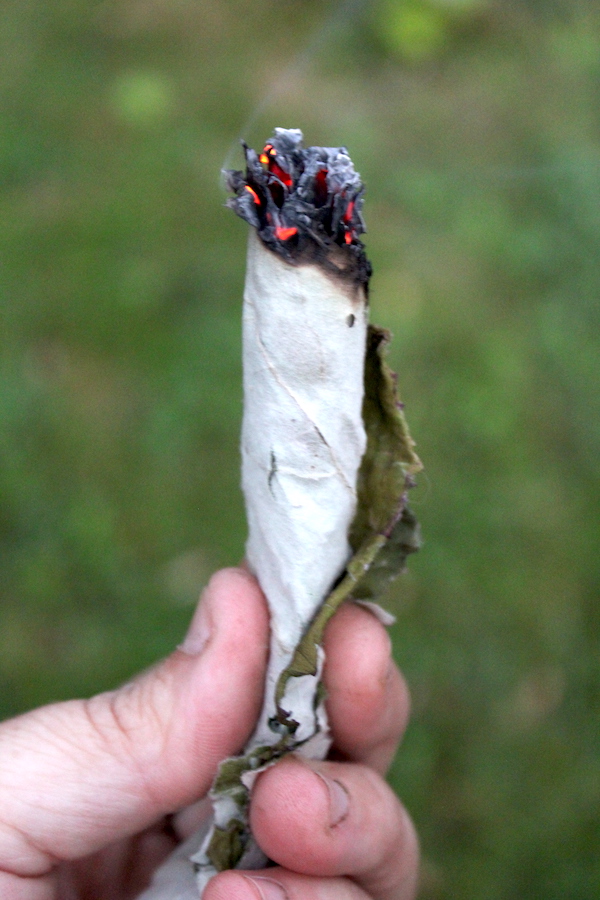
Coltsfoot doesn’t smell great fresh. But as we lit the first bundle, I was amazed by the pleasant smell of the smoke. It smelled vaguely of fresh American Spirit cigarettes, but without the harsh notes.
I’m not a smoker, and never have been, but it smelled good enough that I did give it a try. I have to say, it was lovely.
My husband, who was a smoker 10 years ago, gave it a try and was also impressed. He said, “If I had an ounce of pipe tobacco to carry me through the winter 100 years ago, I would have been cutting it heavily with this.”
While I expected to have to hold a flame to the leaves continuously, but once they were lit, they continued to smolder and all it took was a gentle breath of air every now and then to keep it burning. The problem is, when I blow on the tip of the burning coltsfoot roll, the ashes blow away. Smoking them actually helped keep the fire stoked without losing the ashes.
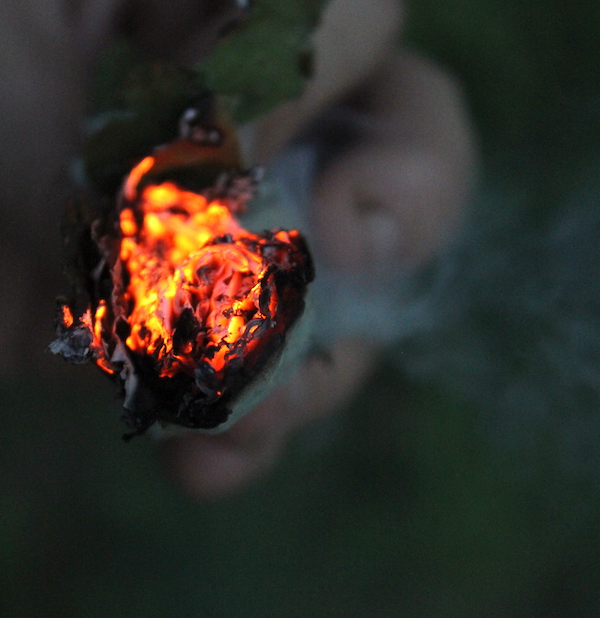
Most sources I found say that the leaves were dried and then bundled in some manner before being burned on a flat rock. I tried the flat rock method, but there wasn’t enough airflow. The fire quickly went out without producing much ash.
I kept applying more flame, but it didn’t help. It’s tricky finding a way to burn the coltsfoot where it continuously stays lit but also doesn’t lose the ash as you fan the flames.
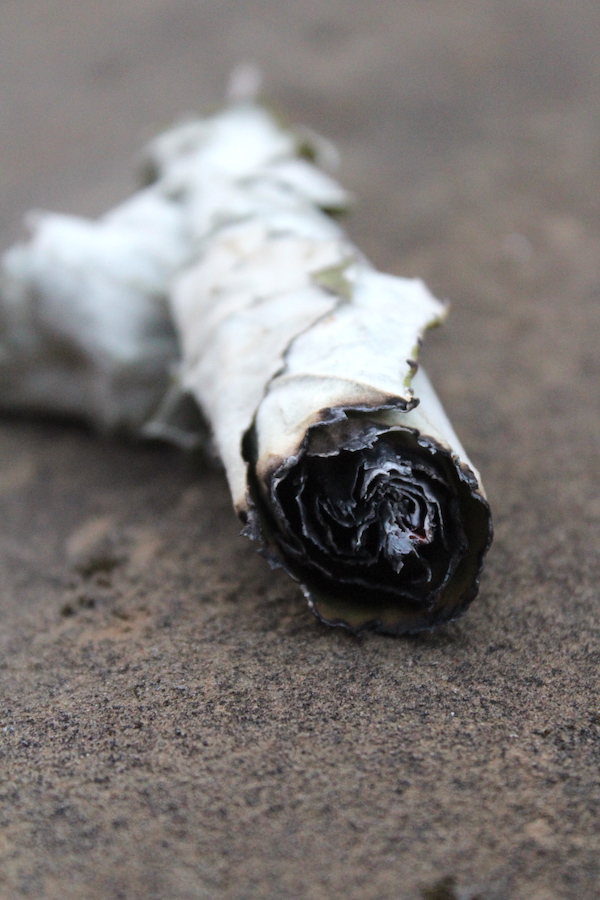
In the end, I very carefully blew on the flames and then tapped off the ash onto a plate. Lifting the bundle away from the plate each time I blew helped kept the ashes from blowing away.
A single bundle of 3-4 leaves yielded about one fluffy tablespoon of ash. Powdered down it is perhaps 1/4 teaspoon of coltsfoot salt.
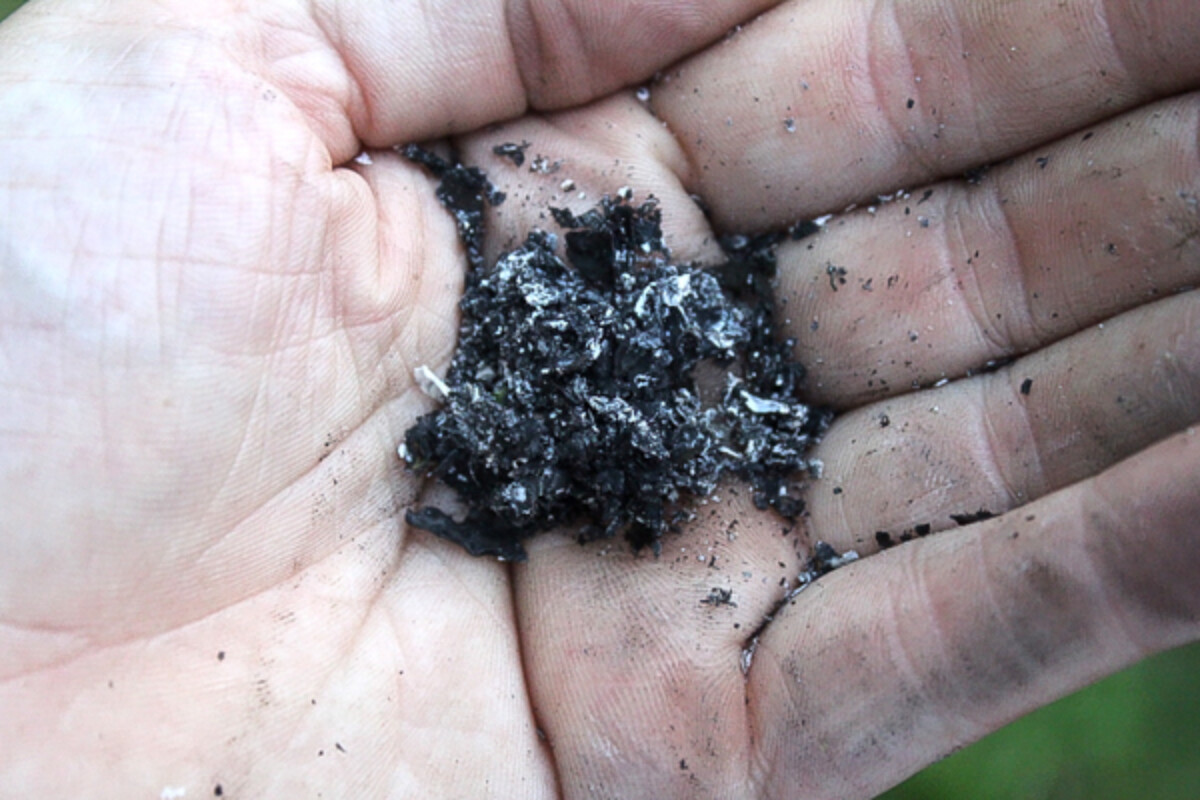
How does coltsfoot salt taste? Surprisingly neutral. The ash itself doesn’t taste like anything, just mildly salty.
That’s the idea I suppose, to add salt without adding other off-flavors. I would happily add it to my food as a salt source, but I’ll have to find a more efficient way to make it.
I think that all the leaves placed into a large dutch oven might be the best way. The dutch oven would keep the ash contained, and it could be lit and then hung over the fire to keep it hot and provide a good draft of hot air from the flames in the campfire below.
Is Coltsfoot Toxic?
That’s tricky…it does have a long history of use in herbal medicine and has been consumed by humans for millennia. But that doesn’t necessarily mean it’s safe.
As a tea, the leaves were always consumed for short periods of time to treat acute cough, and most sources I’ve found seem to indicate that short-term use is perfectly fine. Long-term use, and use by pregnant women and children though, can be incredibly hazardous.
It contains low levels of a toxic alkaloid that damages the liver, and there have been multiple documented cases where young children when given a coltsfoot tea daily by their mothers for a year or more eventually developed fatal complications.
That said, there’s a difference between tea and plant ash. I’d imagine the alkaloids are destroyed in the burning process, leaving just mineral ashes behind as a salt substitute. This is the only way I can explain the long-term use by native peoples, which flavored their food with coltsfoot salt daily over the course of decades.
Still, there’s no guarantee for safety, given that it hasn’t been tested.
If you’re curious, you can read more about coltsfoot toxicity and potentially safe doses and uses in this study.
Other Salt Containing Plants
I’ve seen a few other references to extracting salt from plants besides coltsfoot, but they’re scattered. Stinging nettles may be another source of wild salt, but I haven’t found any dependable sources one way or the other.
Some sources make it seem like nettles were ground up and blended into salt to add flavor and minerals, others seem to suggest that nettles were the salt source. It’s unclear.
As a child, I read a book called My Side of the Mountain, about a 14-year-old boy who runs off into the wilderness and survives for a full year, reading a survivalist book he picked up at the library. It’s a great boy adventure novel, and has detailed pictures of animal traps, along with just about everything else the boy makes to survive. He baits a deer trap with a ball of homemade salt lick, made by boiling hickory roots.
I’ve since seen many other references to boiled hickory root salt. The resulting tar-like substance supposedly makes a tasty salt. I can’t test this one unfortunately because hickory trees aren’t native to Vermont. They cover much of the east coast, but they only go up as far as Massachusetts.
Beyond hickory roots, I’ve also seen a few references to extracting salt from wild parsnip and wild carrot roots. This seems less believable, as the roots would quickly form a pulp and cook down into a carrot or parsnip paste. Parsnips and carrots, wild or otherwise, aren’t particularly salty.
I would love to hear any other plants that contain a substantial amount of salt. Please share anything you might know, experiences or hearsay, in the comments.
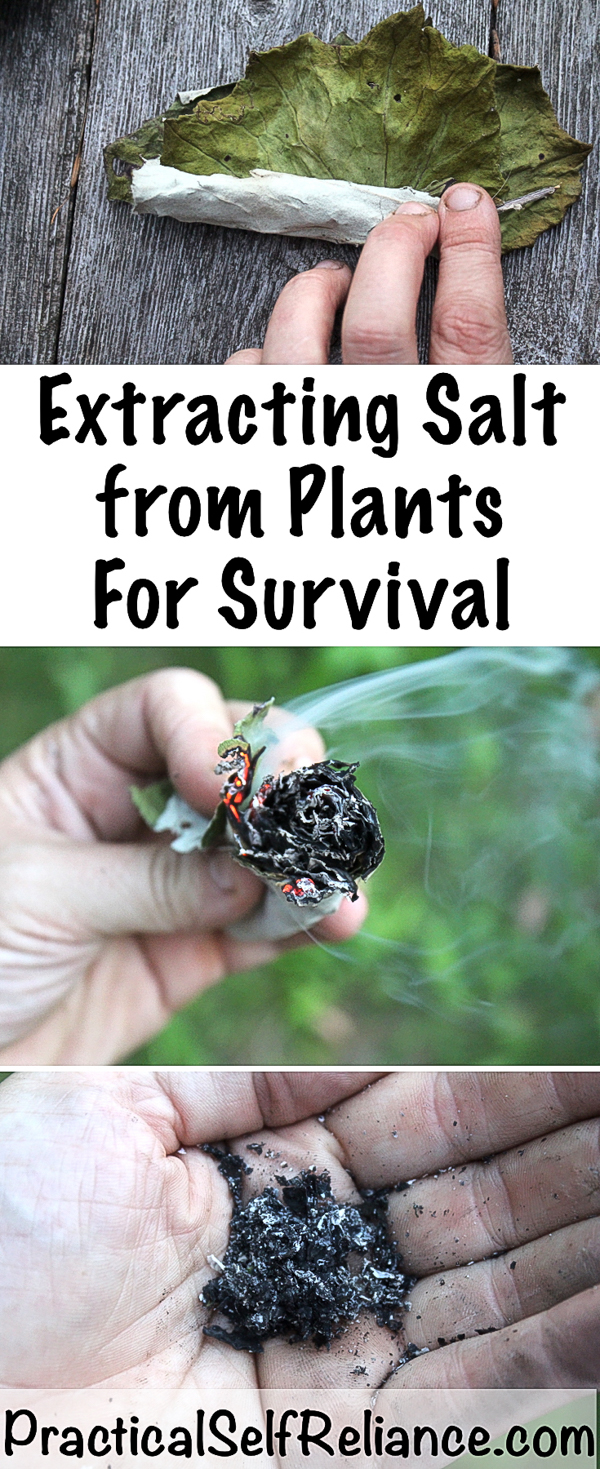

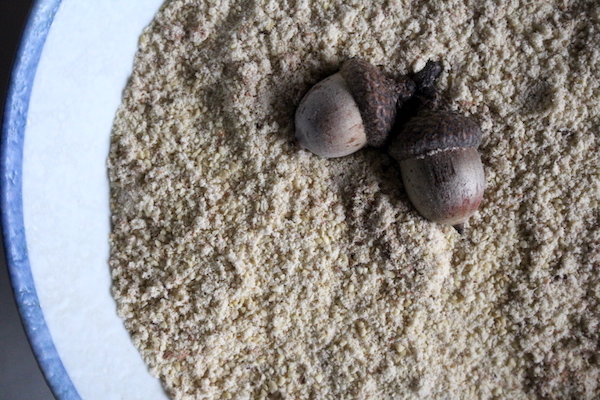
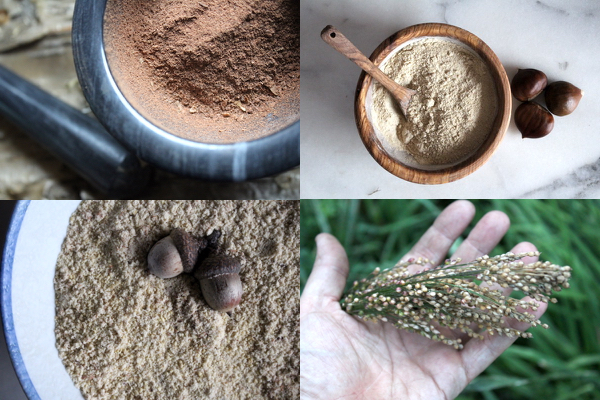
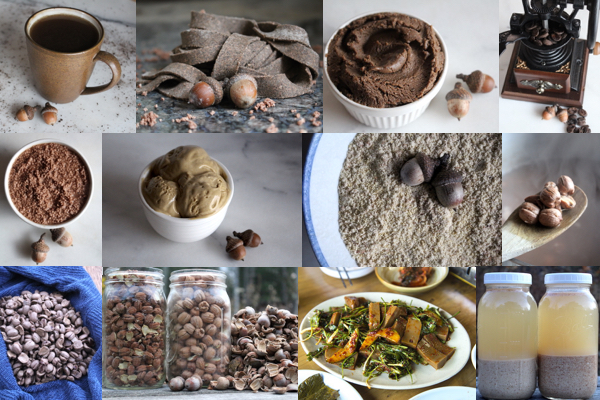










I have an idea.
To make char cloth for tinder, pieces of natural fabric are put into a tight metal container with a tiny airhole, and the container is placed in a fire. The fabric, in the absense of oxygen, burns into a fabric-shaped charcoal material, which is can be used to light a fire. The char cloth catches even the smallest spark or ember and then burns with a soft steady heat.
The container can be any metal tin or box with a tight-fitting lid, and it can be reused as many times as needed. The airhole is about 1-2mm in size, poked with a nail, large enough to release pressure and the gasses produced, and small enough to not let oxygen in, which would cause the char cloth to burn. One airhole is enough for a hand-sized box; if more material is processed in a larger box, it might need a few more airholes. Wrapping a little bit of wire around the box will prevent it from opening in the fire.
I’m thinking that burning coltsfoot into a char in the exact same manner, in a closed container in a fire, would make “char coltsfoot”, which can then be lit, and will gently and perfectly burn into an ash.
I can confirm high salt content in stinging nettle.
I harvested and dried some tender new leaves and started adding them to soups for a little extra nutrition. I found that the soup never needed as much salt when I did that.
This is fascinating! Who would have thought that you could extract salt from plants? Nature always has a way of surprising us. 🌿🧂 It’s incredible how traditional knowledge has been passed down through generations. Have you personally tried making and using coltsfoot salt? It seems like a unique and practical skill for survival. Thanks for sharing this valuable information! 🌱 #SurvivalSkills #PlantBasedSalt #NaturalResources 🌿🧂
Yes, this article was written to detail the personal experience of creating coltsfoot salt.
Sea Beans (aka Salicornia) grow wild in warmer months on coasts in the Pacific Northwest and I believe all over north America. They taste like we’ll salted asparagus. I’ve never tri d it but I imagine that fully dehydrating them and grinding to a powder might make a vegital seasoning ‘salt’. But I like them fresh in salads and have never tried drying them.
That sounds very interesting. Thanks for sharing that.
I read My Side of the Mountain in 4th grade. Loved it and it has stayed with me ever since!
Great Article. I really enjoy this website. Every time I come here I learn something new. Interesting about salt from plants. Would like to know more about brewers yeast. I am a winemaker. In fact, I used your dandelion recipe for something unusual this year. Make mostly wine with grapes. Are you saying that what is left behind after we siphon off the wind can be dried and used as brewers yeast?
Are you referring to Ashley’s reply to the comment from D.W Stratton?
I have heard that Kochia tastes quite salty. I’m not familiar with it myself, but was told it could be used to desalinate farmland.
I had just been looking into kochia. It grows invasively on some saline areas of farmland in my area. It is toxic, but especially in drought years. I did read that getting younger plants cooking the aerial part is the way to go with it. Animals can use it as a portion of their forage & enjoy it, but too much and at the wrong stage of the plants like can kill livestock. It is still worth researching as a possible sparingly used option, I think.
I’m in northern Vermont and have a number of Shagbark Hickory trees on my property. Want me to send you some roots?!
Just wanted to say thank you for this article. My family and I are vegan and trying to get prepared for growing civil unrest and a deathspiral of society. I don’t think there are going to stop being governments or anything like that, I just think that those of us out in the country are going to be more and more isolated and on our own which means we’d better learn to be self-sufficient insofar as is practicable. My biggest concerns for facing that kind of breakdown of social support is: a.) lack of salt, b.) lack of vitamin B12. There are some studies now suggesting that some species of duckweed can be grown and ingested to give B12 though more evidence is needed to indicate that it is bio-available as cobalamin rather than an analog. This at least gets the salt fear taken care of: we have oodles of lambsquarters growing all over the place in Massachusetts, and probably coltsfoot too. I’ll keep an eye out for it this spring!
Brewer’s yeast is supposed to be a really great source of B12, and when we brew a beer there’s literally a gallon of yeast cake at the bottom of the bucket. Mixed with the hops, it doesn’t taste good, but you could make ale or fruit wine and the yeast would be much more neutral. Pull it out, dry it and you’d have your own brewer’s yeast flakes.
Good luck finding a salt source, I’d say you’re likely better off just packing away a 5-gallon bucket of high-quality salt with trace minerals (like Himalayan salt), that should last for dietary salt needs for a decade even for a pretty big family I’d think?
Historically, I think most people’s necessary salt (not food preservation salt) came from animal blood, after the animals had concentrated it from wild plants, eating them in quantities that’d it be difficult for a human to accomplish. As a vegan, or just even for the average person that’s not a hunter, that’s not really an option. Storing enough really shouldn’t be all that trick though, unless you’re expecting to be nomadic.
5 gallons of salt = approx. 50lbs. Assuming 3g consumption per day that would equate to approx. 7,666 days worth of salt for one person, or 21 years. For a family of 4, a 5 gallon bucket of salt will last around 5 years. I’d recommend 1 bucket per person if you’re planning on SHTF scenarios. Also consider the trade value as it will be quite high the further inland you are.
I was getting into phytomining, and I was looking at succulants such as sea beans from California to grow on my land, it seems I could do it with reasonable success, however, the way you get the salt from the ash, is very similar to how plants can be used to harvest elements like copper, nickel, gold, and I thought to myself, this could be done with salt. you could process that, with water dissolve the salt evaporate it, and create table salt crushing what was left behind from solar radiation!
Look into making a solar dehyrdator. Dry the leaves super super quick and en masse for more time-efficient production. Just need an old window someone puts out for trash and a bit of siding and some black paint. Voila. You can get plans for it at permies.com.
I’ve heard that the seed clusters of wild carrot make good salt substitute but haven’t tried it yet
I have read that coltsfoot is carcinogenic. I stopped using it for tea and as a tobacco substitute. Also you might caution people that wild carrots look very much like poison hemlock and it would be deadly if they tried to make salt out of that. Further many people get a severe poison ivy like rash from wild parsnip. I have not, but it is not uncommon. It might be helpful if you were more cautious in giving people advice not necessarily because what you said is wrong, but because they might hurt themselves experimenting without these additional facts.
Wild parsnip only causes a rash when it is flowering (domestic parsnip does the same) because the oils in the flowers cause phototoxicity. It is perfectly safe otherwise.
If you want to extract salts from plants, I would personally take a large quantity and burn to white ash and then place in a straining container and run distilled water (or any water in a survival situation) through it to be collected and evaporated in another container. This is an old alchemy method used as they believed the salts had special curative or spiritual properties. I think this would result in a much more pure salt extraction
But would that not produce lye?
You need wood ash to produce lye. Burnt leaves are unlikely to produce potassium hydroxide when mixed with water..
I’ve also tried this and was as pleased as you were with the results. Now I live in NM, and I plant to experiment with four-winged saltbush (Atriplex canescens) this year. Thanks for an excellent piece.
Awesome Ellen! Great to know it worked for you, and to have another plant to list.
Hi. I have a very healthy 4 wing saltbush in my front garden. Phoenix valley, Arizona USA. It works very well as a salt substitute. The Native Americans in the Southwest used Saltbush pollen as a flour for making bread.
Saltbush?
“Saltbush leaves have a high salt concentration (up to 30% of dry weight)”*
*http://agriculture.vic.gov.au/agriculture/farm-management/soil-and-water/salinity/saltbush-for-saline-land
So would it be feasible to use this type of salt in the curing of meat?
That’s a good question, and I don’t have the answer. Assuming it was the right type of stalt, it would take a lot of coltsfoot to make enough to cure any amount of meat. I would think slow smoked jerky, dried really thoroughly would be a better preservation option, potentially with plant-based salts to add a bit of flavor.
No. Curing salt is made from nitrates and nitrites. This is the cure molecule in curing salt. You can salt and dry but it will not last long term.
This is incorrect. In Norway and other places where fish was cured, it was heavily salted and dried. In pioneer days, meats were extremely heavily salted and hung to cure. Both were done without nitrites and nitrites, which came as a later (modern day) addition to curing practices.
True, ordinary salt is just as good, better in my opinion. People often overdo the salting. I dry my meat in Alaska and use just enough salt to get by, mostly for taste. In a very humid, tropical climate you probably better off with curing salt, but that is a guess.
Think about celery! Even in the commercial setting today. Celery is used in uncurled meats to add the salty taste that nitrates would usually give. Celery is a wonderful salty taste. Grind up the whole stock, add the slurry to whatever needs salt?
True …you can even buy celery salt in England 🙂
I wonder if burning the dried leaves by the same method used to make char cloth would work? If I can find any I will try it and find out.
That was my exact thought as well. Put them in a tin or something similar put a small hole in the lid put it in a fire till it stops smoking then you should be left with the same thing. Or at least it seems you would. If you try let me know and I’ll do the same. Have to wait till spring here tho
I did not know this about getting salt from plants. Thank you so much, Now I’ll have to find Coltsfoot or Lambs quarters. Here in Arkansas. And we have Plenty of Hickory also. lol
Off topic, but how are things in Arkansas this year with everything going on?
I read somewhere that Lamb’s Quarters got their soft frosted sheen from salt deposits. I don’t have coltsfoot, but i have tons of Lamb’s Quarters! Need to do some research on that!
Wonderful! Thanks so much. A quick bit of google research led me to this:
“The whitish dust present on each leaf is made up of mineral salts from the soil and is an indication of its mineral-rich value. Often the lambsquarter leaves will taste salty and therefore make quite a nutritious salt replacement or addition to dishes! Lambsquarter seasoning is made easily by drying the leaves and mixing them with other spices.”
I’ve been cultivating lambs quarters all summer because the seeds are supposed to be delicious (it’s related to quinoa). It’ll be a few more weeks before I harvest the seeds, but when I do, I’ll try to extract salt from the leaves.
Thanks for the wild salt lead!
How did it go with extracting the salt from lamb’s quarters?
Honestly, I completely forgot about trying it! Up here in the north country, they’re just getting started and are only a few inches tall at this point (early July). If I remember I’ll try it out next month when they’re bigger.